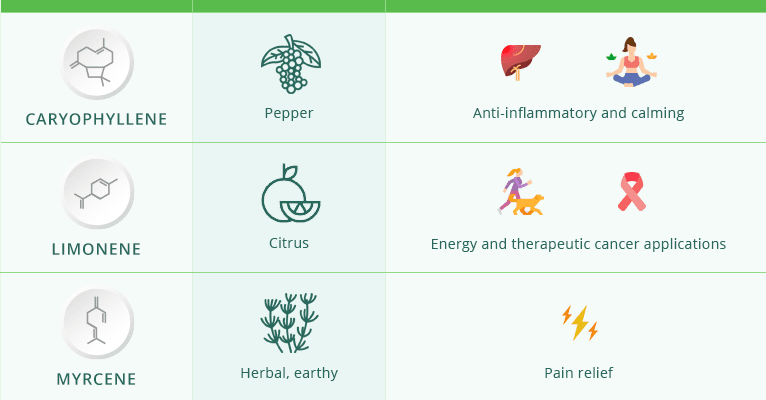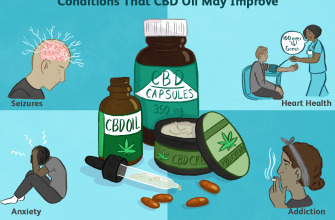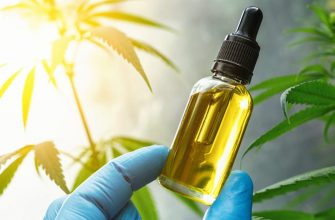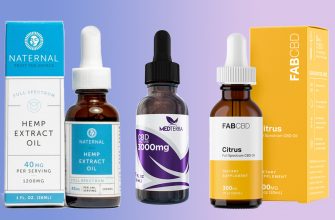As we begin to collectively recognize and understand the many potential benefits of CBD and THC, researchers are turning the page to reveal hundreds more chemical compounds found in hemp plants, many of which may also have therapeutic benefits.
As you can see in the table of terpenes and cannabinoids, these compounds fall into two categories: cannabinoids, which include CBD and THC, and terpenes.
If you are not using a CBD isolate that only contains cannabidiol, you are likely to encounter terpenes and other cannabinoids when using CBD oils or other types of cannabis-based products.
This table of terpenes and cannabinoids will help you mentally organize some of the more well-known compounds that are as powerful as CBD and THC, but for more background on these fascinating phytochemicals, let’s take a closer look.
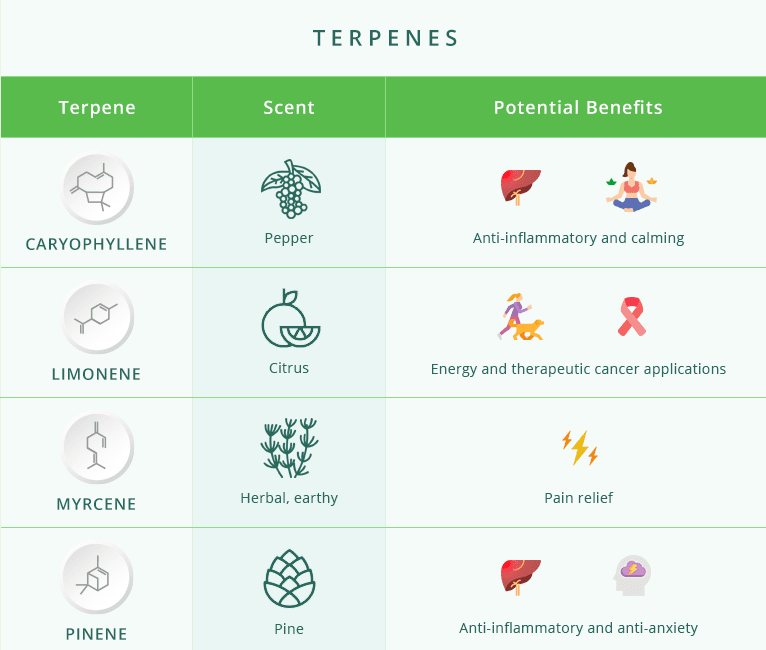
What are terpenes?
Just like the cannabinoids CBD and THC, cannabis glands also produce oily terpenes. These are groups of chemical compounds that have slightly different characteristics and chemical composition than their cannabinoid neighbors.
The biggest disadvantage of cannabis terpenes is the smell. In medicine or recreation, at rock concerts or nursing homes, few CBD or cannabis users will deny that cannabis-based terpenes give off a pungent odor.
“Skunky” is a descriptor often used to describe the smell of common cannabis strains, which is fitting given that plants use these aromatic terpenes as a defense mechanism against would-be predators.
On the other hand, some substances in this table of terpenes and cannabinoids smell like mint or even sweet to attract pollinating insects.
Cannabis is not the only plant species that contains terpenes, but it has over 100 of them, many of which have recently been discovered to have medicinal potential.
List of terpenes
Here are just a few of the leaders:
Caryophyllene: Also found in black pepper, rosemary and several other commonly consumed foods, this terpene is unique in that it can directly stimulate the body’s natural endocannabinoid receptors. It smells and looks like a terpene, but it acts like a cannabinoid to fight inflammation and soothe.
Limonene: A discerning nose picks up notes of citrus behind a wave of musk with the scent of certain cannabis strains, for which you can thank limonene. This sweet-smelling terpene is found in a variety of citrus fruits. Preclinical studies cited by cancer researchers at the University of Arizona at Tucson show that limonene terpene may have therapeutic applications for breast cancer patients.
Myrcene: Established among the most legal cannabis brands/varieties, myrcene exudes an earthy, raw and polarizing aroma (love it or hate it). Researchers at the University of Honolulu Chaminade describe in this study how myrcene can relieve both general and neuropathic pain by interacting with a receptor known as TRPV1.
Pinen: While myrcene may be the most common terpene in cannabis, pinene covers a much larger distribution when it comes to different plant varieties around the world. Again, it takes a dedicated effort to capture this pine scent, but it’s not as hard to spot in regular cannabis strains as it is in citrus. Pinene is believed to have anti-inflammatory and soothing effects.
What are cannabinoids?
If the primary function of a chemical is to interact directly with the body’s natural cannabinoid receptors, then it is a cannabinoid.

Depending on the type of cannabinoid, it will interact with one or both of the cannabinoid receptors found in our brain, designated CB1 and CB2, which are responsible for fighting inflammation, pain, and a number of other problems and pathologies.
Even within their category, CBD and THC fall far short of over a hundred other cannabinoids. Many of them are emerging from the fog and coming to the fore so that clinicians and the general public can reflect on their therapeutic usefulness.
List of cannabinoids
Cannabigerol (CBG): A group of researchers in pharmacology and neurology from Italy demonstrated in a study that cannabigerol can fight neuroinflammation. Inflamed nerve cells treated with this cannabinoid survived longer than those in the control group and showed signs of renewed “antioxidant protection”.
Cannabigerovarin (CBGV): The authors of the Endocannabinoid Research Group, also from various universities in Italy, confirmed in this 2011 study that cannabigerovarin can be as effective as CBD and THC in fighting inflammation and pain.
Cannabidiol (CBD): We couldn’t miss the only cannabinoid found in an FDA-approved drug, especially since CBD is probably the most abundant cannabinoid in existence. Like other substances in our cannabinoids and terpenes chart, non-intoxicating CBD has been shown to be effective as a potential anti-inflammatory and analgesic supplement, among other things.
Cannabinol (CBN): We previously wrote about this cannabinoid, when THC ages and/or oxidizes, it becomes CBN, a moderately psychoactive cannabinoid. THC and CBN combined have amazing effects, according to this article written by the departments of psychobiology, psychiatry and medicine at the Escola Paulista de Medicina in São Paulo. Most promisingly, researchers are seeing the potential to fight insomnia emerge, which hopefully means more CBN research.
Tetrahydrocannabinol (THC): Largely responsible for the psychoactive nature of the marijuana plant in its natural form, THC overlaps with CBD in terms of health benefits, but not always. For example, THC is believed to relieve glaucoma while CBD is not. Conversely, THC is not as commonly used for inflammation as CBD. But of course, this cannot be called an objective assessment.
Chemical balance and entourage effect
Finally, it is important to note that, in addition to studying the benefits and effects of individual terpenes and cannabinoids, if we are going to extract these compounds and modify them in any way, we must evaluate how they all work together in their natural environment.
Cannabidiol and hundreds of other cannabinoids and terpenes found in hemp-based products interact with each other to provide a meaningful result that can be influenced by changing this natural ratio.
In the case of this “environment effect”, you can think of cannabinoids and terpenes as colors blending together. Change one or more paint colors and you’ll get a different result when they’re all mixed together again.
By appreciating this difference and focusing more on the medically significant cannabinoid and terpene compounds, researchers and consumers can work together to get more out of CBD and related products.

